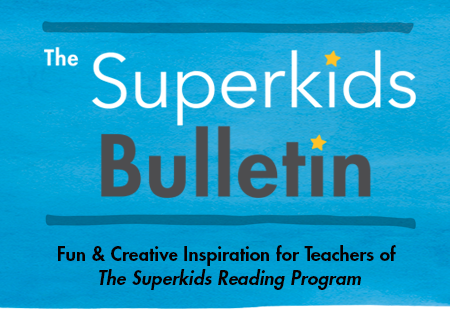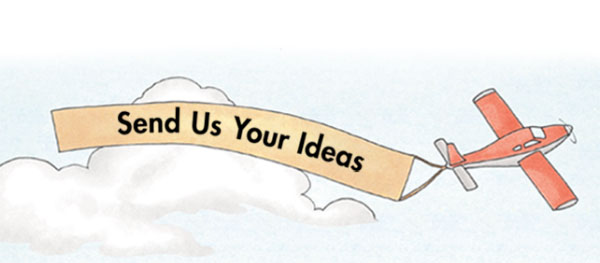|
|
|
|
ISSUE 15 | DEC. 2020
|
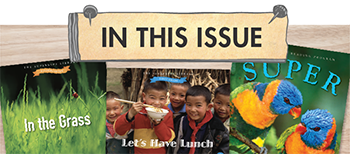 
|
|
Many teachers strive to incorporate interdisciplinary teaching and learning into their instructional planning. Superkids unit topics, individual character interests, and text topics are ideal for creating extensions into science, social studies, math, or other content areas. In this issue, we will share resources within the program to assist with cross-curricular planning and explore creative ideas from teachers.
|
|
|
|
|
|

|
|
|
|
| 1. |
Superkids informational text is perfect for cross-curricular teaching. Topics can easily be connected to science, social studies, and math extension activities using a resource found on the Teacher Portal Resources tab. Click Informational Text Topics to find handy documents that list topics and content area connections for Super Smart, Super-Duper, and SUPER Magazine.
|
|
|

|
| 2. |
The Index for the Teacher’s Guides is another valuable document that can assist with planning. This index is in the Teacher Portal Resources tab. You will find specific pages within your Teacher’s Guides that point to cross-curricular activities. For example, the first-grade index directs a teacher to page 29 in the Unit 2 Teacher’s Guide for a math extension activity. Students can participate in a coin categorizing activity after reading What Can You Get With a Nickel?
|
| 3. |
In kindergarten, every unit has suggestions for setting up a Project Corner where children can explore materials related to the topic of the unit. Instructions for each Project Corner describe several activities you can do to extend children’s learning across the curriculum to art, music, science, social studies, math, or physical education. Project Corner suggestions can be found in the back of each Teacher’s Guide and in the Materials tab of the Teacher Portal. |
| 4. |
The Independent Activity suggestions will include cross-curricular activities tied to the text you are reading with your students. In kindergarten, these can be found at the end of each library book lesson. In first and second grade, these activities are located daily in the Reading section of your Teacher’s Guide. |
| 5. |
Did you know every unit in kindergarten and each week in grades 1 and 2 has a new focus topic? Topics can be found on the Suggested Teacher Read-Aloud page in your Teacher’s Guide. For example, in second grade, Unit 6 has a focus on fall and farms as the Reader stories highlight the adventures of Ms. Blossom’s class visiting a farm. This would be a great time to plan science instruction around the four seasons, fall, or farm animals.
|
|
 
|
|
|
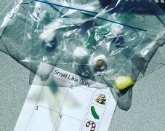 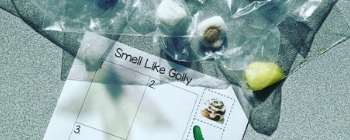
|
|
|
We all know Golly loves to sniff garbage. Erin Haynes shared this “Smell Like Golly” activity. Students were asked to smell inside a numbered bag that had a scented cotton ball inside. They had to determine the smell, find the picture that represents the determined smell, then cut and paste the correct picture in the numbered box on the recording sheet.
|
|
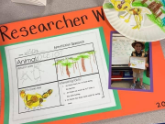 
|
|
|
Denise Terhune connects Oswald’s interests to an introduction of animal research. Students create their own odd animal. They are then asked to draw their ideas about where the animal lives, what it likes to eat, and what the animal looks like. They finally dictate three interesting facts about their odd animal.
|
|
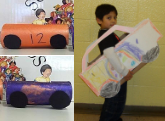 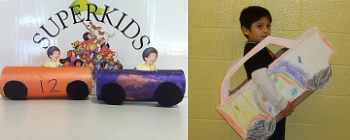
|
|
|
Hot Rod loves cars! Let your students race to the art center to create their own Hot Rod racers. One Superkids teacher shares, “As we work through the Hot Rod unit, I ask my students to design their own cars out of donated boxes during center time. On the final day, we take a lap around the school in our cars and we sing Hot Rod’s song.”
|
|
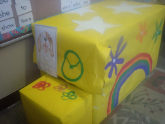 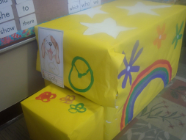
|
|
|
In kindergarten, the Superkids clean up an old bus to create a clubhouse. Many teachers use this opportunity to allow their students to create their own clubhouse for the classroom. When finished, this space can be used for independent or partner reading during independent work time.
|
|
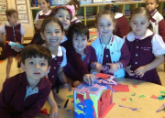 
|
|
|
The Superkids characters get creative with old boxes in The Big Box Fix Up story in kindergarten. Many teachers extend this idea into a creative art station. Students can bring their own box to school and you can supply the craft materials. When all students have visited the station, they present their creation to the class and ask, “Can you tell?”
|
|
 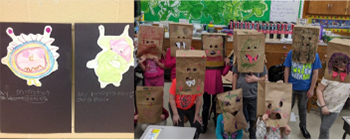
|
|
|
The Monster Under the Bus story in first grade is a great springboard for a creative art activity. Simply provide some art materials and ask students to create their own monster! Another story that inspires monstrous creativity is My Happy Rainy Day. This class created their own unique monster masks using a variety of craft materials.
|
|
 
|
|
|
Deb Cline’s first-grade kiddos enjoy participating in all five of the fun ideas shared in the In Case of Rain idea book authored by the Superkids characters. Leapfrog offers a fun physical education connection on a day the kids can’t play outside.
|
|
 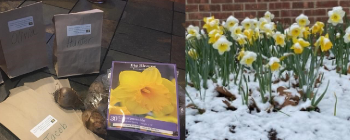
|
|
|
Early in second grade, Ms. Blossom takes the class outside to plant daffodil bulbs. Many Superkids teachers will take their own students outside to plant bulbs around the school. Observing and recording the changes from month to month is a great science connection.
|
|
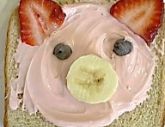 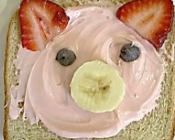
|
|
|
When this second-grade teacher reads Mercy Watson Fights Crime with her students, these book club members celebrate by cooking up a fun snack. This recipe calls for a slice of bread, a circle of pink cream cheese, two cut strawberries, two blueberries, and a slice of banana.
|
|
|
If you have a great idea to share, submit a description—and photos if you have them—via e-mail.
|
|
|
|
|
|
 Sara McMahon’s students stretched their problem-solving muscles when they were asked to assemble this boat as they learned about Frits. When they were successful, they were able to go on an adventure with Frits!
Sara McMahon’s students stretched their problem-solving muscles when they were asked to assemble this boat as they learned about Frits. When they were successful, they were able to go on an adventure with Frits!

|
|
|
Janel Sasser’s students use classroom supplies to invent and build items tied to the Superkids characters. Students have made new ovens for Cass, paintbrush holders to keep Oswald organized, dog houses for Golly’s friends, bridges for Alf to safely cross, and tool hangers for Doc’s shop!

|
|
|
|
During independent work time, this teacher provides two stacks of decodable words printed on small, plastic portion cups. Partners take turns reading the words on the cups. If their partner says they have read the word correctly, they can use the cup to create a tower. The winner of the game is the partner who creates the tallest tower.
|
|
|
 We bet kids in this class love this partner center with a focus on spelling practice. To create the activity, the teacher writes encodable words on craft sticks and provides a cup of play clay. To play the game, a student will pull a stick, read the word to their partner, and ask the partner to spell the word. If the child spells the word correctly, they can use the stick and dough to create a structure of their own. The partner with the structure that stands the longest wins the game.
We bet kids in this class love this partner center with a focus on spelling practice. To create the activity, the teacher writes encodable words on craft sticks and provides a cup of play clay. To play the game, a student will pull a stick, read the word to their partner, and ask the partner to spell the word. If the child spells the word correctly, they can use the stick and dough to create a structure of their own. The partner with the structure that stands the longest wins the game.
|
|
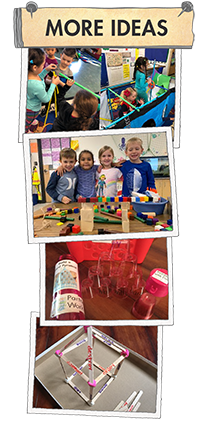
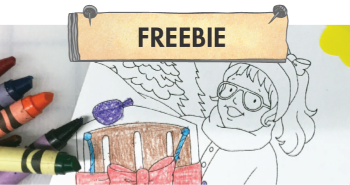
|
|

|
Download fun Superkids postcards with winter and holiday scenes! These can be used for students to practice their letter writing skills in class or at home. Or, a fun idea for teachers who are teaching remotely would be to mail individual notes to each student as they begin their winter break.
|
|
|
|
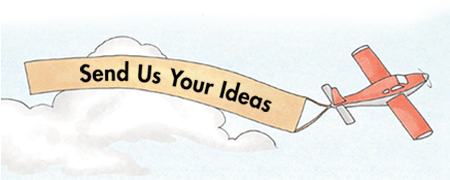
|
|
|
|
|

